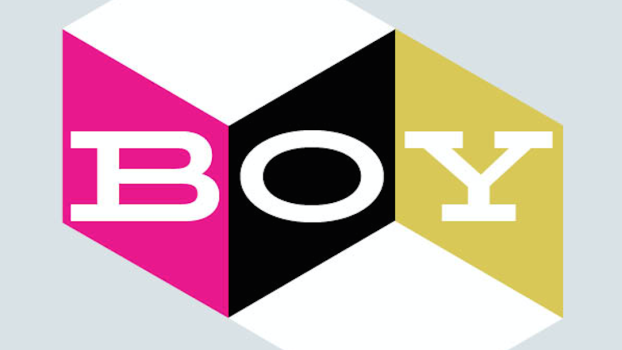M&M Food Market has accomplished a lot over the last five years under CEO Andy O’Brien.
The former Canadian president of Kelsey’s and Montana’s at Cara was brought on to transform the frozen food retailer in 2014, following its acquisition by Searchlight Capital Partners, the U.S-based private equity firm that also owns Roots. The ensuing years saw the company (previously named M&M Meats) rebuild its corporate team, relocate its head office to Toronto, implement new store designs and remove the artificial flavours, colours and sweeteners from its entire product line, leading to five straight years of comparable sales growth, according to the CEO.
Within the last two-and-half years, M&M has renovated more than 50% of its stores (with an additional 50 or 60 locations on slate for this year), continued to expand its product portfolio with new formats and meals designed for specific dietary needs, and introduced a new Rewards loyalty program, built on 17 years worth of transaction data from its former MAX loyalty program and so far capable of serving up personalized offers to 3.5 million active customers.
The retailer has also made strides to address what has long been one of its biggest challenges: penetrating high-density urban centres and less-dense rural areas across Canada. Through its Express Store concept, which offers around 50 products (compared to the 450 typically found on the shelves of its standalone stores) in the frozen food sections of retailers like Rexall. It has seen its click-and-collect business grow 50% per year for the last four years, and rolled out delivery to 225 locations.
Since phase one came to an end in July, O’Brien says the company remains focused on transforming the business over the next five. It recently launched a campaign, building on previous work with Cossette, that aims to tell the stories of its revamped product line.
[iframe_youtube video=”5JQu4n8uopo”]
You previously had the goal of opening 200 Express Stores by the end of 2019. How far along are you in the process?
As of right now, we have 350 stores. By the end of this calendar year, we’re going to have 450. And probably by the end of next summer, we’ll be north of 1,000 throughout Canada. It’s been absolutely a great partnership for Rexall and for us. We started a test with them that was going to be for six months. They came to us within three months and said, ‘We want to roll it out to all of our stores.’ The biggest challenge we had was making sure that we could supply it and that we had the distribution system in place in order to get it to the stores.
We did the same thing in Quebec, with a convenience store chain called Beau-soir. We have rolled it out to 150 Beau-soirs in Quebec, and into towns where we don’t have a store. And it’s been doing fantastic. We’re doing a test right now with 7-Elevens, going into 25 of their stores. We’re picking partners that make sense for us, represent the brand, [where] it’s a different usage occasion or a different needs state for the consumer, or a different market where we currently don’t exist. We’re in 25 Rexalls in downtown Toronto now.
M&M Food Market concluded its first five-year transformation phase in July. What do the next five years look like for you?
The first thing that we’re focusing on is our ecommerce platform. The goal is to have 25% of our business based on ecommerce [sales], which is a significant amount for food, given that food typically [represents] under 10% if not 5% [of retailers’ business]. So that’s a major one. The Express Store roll-out will continue. We think the sealing in Canada is about 2,000 stores. We’re also looking to open traditional stores. We have a plan of opening 50 new stores over the next couple of years. The [last] thing that we’re going to see in the next five years is M&M venture outside of Canada.
M&M previously operated under the MyMenu retail banner in the U.S. until it pulled out in 2013. What makes you think you can be successful with expanding into the U.S. this time?
We [launched in the U.S.] in 2009, as we were going into a recession. There were a bunch of reasons [the company] decided to pull out. We’re going to go in with a very different approach [this time]. We’re probably going to do a more ecommerce or Express model, as opposed to a traditional bricks-and-mortar model. We’re in discussions right now with some very large U.S. partners, very early stages, to do similar things that we did with Rexall, 7-Eleven and Beau-soir, where we go in and become their frozen food brand of choice.
There’s a lot of interest for frozen food in other parts of the world, especially in North and South America, so I do see it as a very viable option for us to have a presence outside of Canada. It might not be for a year. We’re doing our homework right now. But everything that we’ve looked at so far seems very promising.
What role do you envision the marketing department playing as you look outside of Canada?
It’s really [about] working closely with our partners, as opposed to traditional advertising or marketing. If we’re working with a pharmacy partner with existing traffic, doing programs with them, be it through digital or through their loyalty program or in-store. Although we’ve been told to help increase their frequency, their average baskets, what our partners want is to have people who are buying diapers or prescriptions or other things to [also] buy frozen food. The goal is to tap into the [customers] inside their four walls. So that’s where we’re focusing our marketing.
How have you addressed consumer demands for healthier food options?
First and foremost, we cleaned up our labels. We previously spent two years removing the artificial sweeteners, colours and sugars from all our foods. Secondly, we looked at our portfolio in terms of different offerings and started evolving pack sizes and cuisines to really appeal to a broader base of consumers that do look for healthier meals, other than just heavy proteins. We’re launching things like sweet potato mash […] and a bunch of gluten free products. When it comes to alternative proteins, we’ve been doing a lot of work on that.
I’ll be honest with you, we’re not happy with what we see out there. I don’t think the quality of the ingredients is what people think they’re getting. So we’re working with different partners [and we] plan to bring out a meatless offering that is an imitation of meat, but not until it’s the right product that represents our brand. I’ve watched A&W, and I’ve watched what’s going on with a bunch of [other players], and they’ve done very well. But I think second-generation products will be much better.
How soon do you expect to launch your own offering?
If you don’t see something from us by next summer, I’d be shocked. That’s really what we’re aiming for right now. We did want to have something out in the winter, but where we’re at right now, I wouldn’t be confident in saying that could happen.
This interview is part of a series for Strategy C-Suite, a weekly email briefing on how Canada’s brand leaders are responding to market challenges and acting on new opportunities. Sign-up for the newsletter here to receive the latest stories directly to your inbox every Tuesday.
The interview has been edited for length and clarity.
























